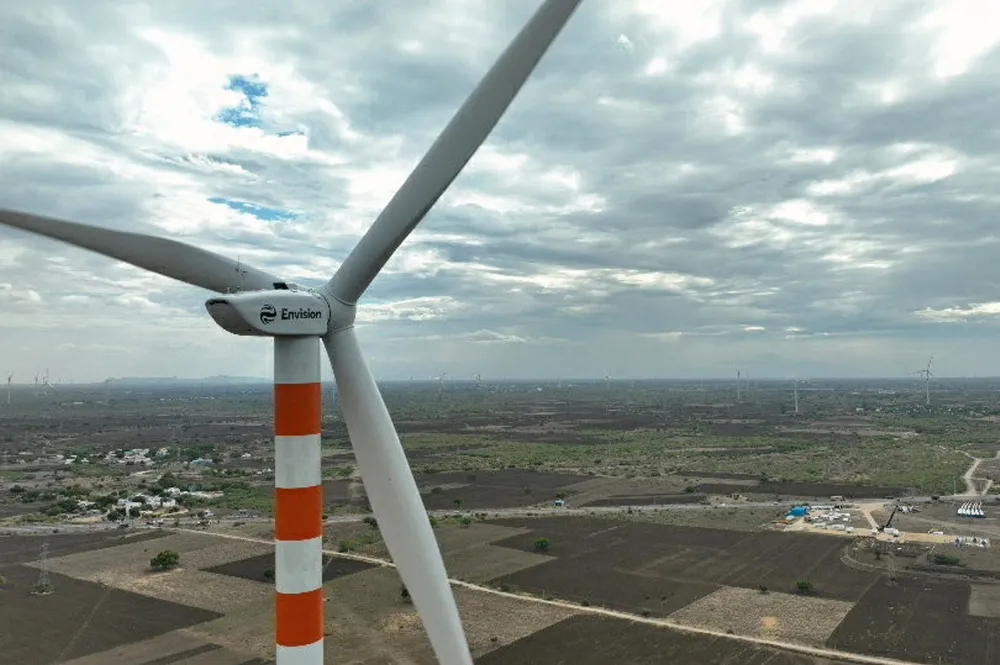Why India is ducking the 'craze' of supersized wind turbines
Bigger turbines may not be best suited for India, which has lower wind speeds than some markets but needs consistency, says chief of local manufacturer

India may be a rising wind energy superpower but is happy avoiding the global “craze” for supersized wind turbines, having found its “sweet spot” scaling up a few years behind other countries, according to chiefs at some of its leading OEMs.
But even onshore, its turbines typically lag several megawatts behind the largest seen in other countries. Aside from the recent Adani additions, its largest installed turbines are 3.3MW, half the size of turbines seen in many other regions.
Whether bigger is better is a “never-ending debate” in the industry, Girish Tanti, vice chair of Indian turbine maker Suzlon, told an audience at WindEnergy Hamburg, the giant industry event held in Germany this week.
There is a “trend in most markets, and India is no different,” for larger turbines, said Tanti. These bring in different economies of scale and can deliver “greater value to our customers.”
But scaling up turbines impacts the entire supply chain “ecosystem,” which he said also “needs to gear up” to accommodate larger models.
“Compared to the rest of the world,” he said the trend in India will be for turbines to remain smaller. But this is because the nature of the Indian market means this is the “most sensible way” to deliver cheap power.
“It also helps us that we don't need to make the mistakes some other markets make,” he said. “We can learn from them and be more cautious.”
In India, “there is not that big craze to go with big turbines,” said Tanti. “Customers are looking at more stable technology which can deliver performance and at a good price point.”
“It's a fine balance,” he said. The size of turbines is still growing, “but it will be a little behind. You will see in general at least two to three years lag” behind many other markets.
Different countries take different approaches, said Tanti, claiming that the US is not going in for the largest turbines available, even though it has the infrastructure to support them.
RPV Prasad, managing director in India for Chinese turbine-making giant Envision, which is now the dominant force in the Indian market, was more upbeat on larger turbines, saying they can help ease issues with land constraint in India.
Investors are also keen to chase the lowest levelised cost of electricity (LCOE), he said, and so will “naturally” go with whatever is the “higher turbine capacity.”
“Cost is not going to be increased drastically, but the AEP (annual energy production) is going to be increased.”
'Larger turbines not suited to providing continuous power'
But he said it is important to consider the nature of the Indian market. The country needs “continuous power” for industry such as steel plants. This means it needs turbines with high plant load factor (PLF), machines that are able to run for the maximum amount possible in a given day.
“Many of our customers” say that they “don't need a six, seven, eight megawatt turbine,” said Kansa, “because the PLF will definitely fall down on that.”
“Do not forget India is a low wind country, it's not like Europe and Germany,” he told the Hamburg-based audience.
“So we have to harness the best. LCOE is the top priority for us.”
Kansa said he doesn’t see an “elimination” in India of three to four megawatt wind turbines. “Yes, we just launched a 4.2 megawatt turbine. But that's not only for India but for our global customers.”
“But in India, land constraint has forced us to go to larger machines. And these machines have to be very efficient.”
They have to give “not only” a good AEP but good PLF, he stressed.
India had 188GW of renewable energy capacity by the end of last year, as it chases a highly ambitious target of hitting 500GW by 2030 set by Prime Minister Narendra Modi.